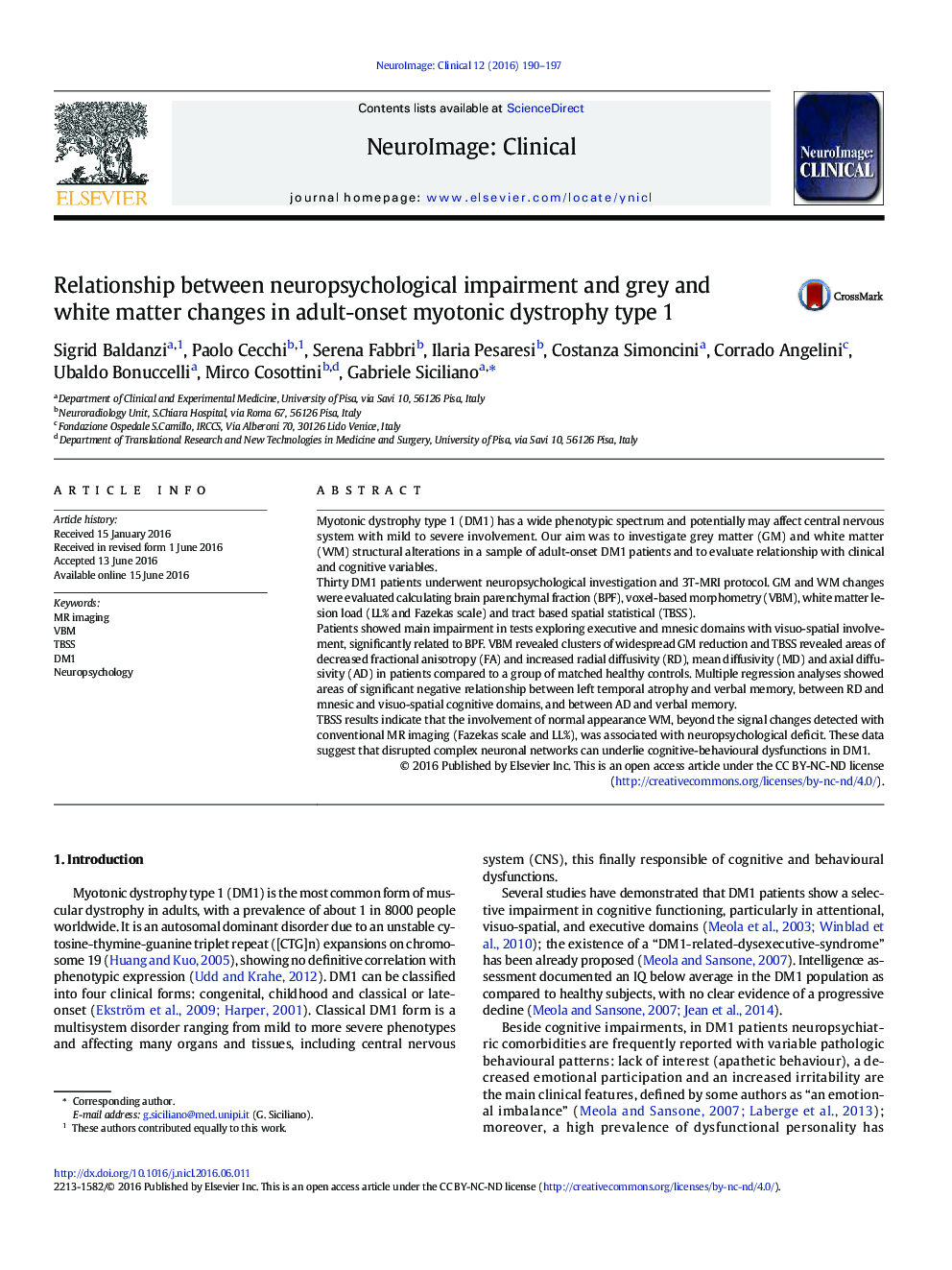| کد مقاله | کد نشریه | سال انتشار | مقاله انگلیسی | نسخه تمام متن |
|---|---|---|---|---|
| 3074804 | 1580955 | 2016 | 8 صفحه PDF | دانلود رایگان |
• We performed VBM and TBSS analyses in a sample of adult-onset DM1 patients.
• The relationship between neuroimaging variables and cognitive profile was studied.
• Global atrophy correlated with executive and visuo-spatial abilities.
• TBSS revealed associations between DTI indexes and cognitive performances.
• Disrupted complex neuronal networks can underlie cognitive dysfunction in DM1.
Myotonic dystrophy type 1 (DM1) has a wide phenotypic spectrum and potentially may affect central nervous system with mild to severe involvement. Our aim was to investigate grey matter (GM) and white matter (WM) structural alterations in a sample of adult-onset DM1 patients and to evaluate relationship with clinical and cognitive variables.Thirty DM1 patients underwent neuropsychological investigation and 3T-MRI protocol. GM and WM changes were evaluated calculating brain parenchymal fraction (BPF), voxel-based morphometry (VBM), white matter lesion load (LL% and Fazekas scale) and tract based spatial statistical (TBSS).Patients showed main impairment in tests exploring executive and mnesic domains with visuo-spatial involvement, significantly related to BPF. VBM revealed clusters of widespread GM reduction and TBSS revealed areas of decreased fractional anisotropy (FA) and increased radial diffusivity (RD), mean diffusivity (MD) and axial diffusivity (AD) in patients compared to a group of matched healthy controls. Multiple regression analyses showed areas of significant negative relationship between left temporal atrophy and verbal memory, between RD and mnesic and visuo-spatial cognitive domains, and between AD and verbal memory.TBSS results indicate that the involvement of normal appearance WM, beyond the signal changes detected with conventional MR imaging (Fazekas scale and LL%), was associated with neuropsychological deficit. These data suggest that disrupted complex neuronal networks can underlie cognitive-behavioural dysfunctions in DM1.
Journal: NeuroImage: Clinical - Volume 12, 2016, Pages 190–197
